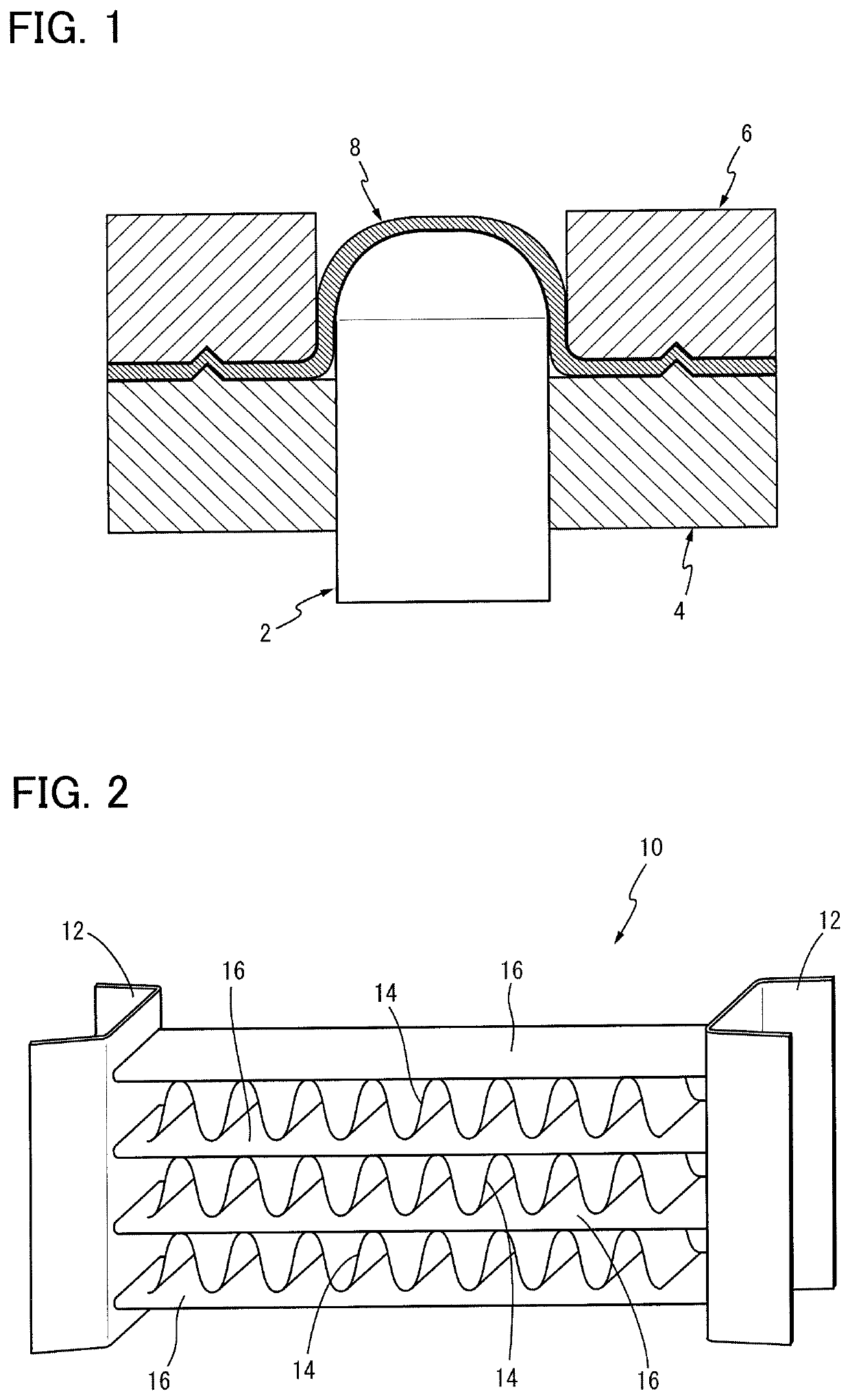Aluminum alloy brazing sheet for a heat exchanger, and process for producing the same
a technology of aluminum alloy brazing sheet and heat exchanger, which is applied in the direction of metal-working apparatus, metal-layered products, domestic applications, etc., can solve the problems of inability to achieve the desired brazing ability for every type of forming, easy to be subjected to erosion, and difficult to recrystallize the portion of the sheet which does not have a sufficient strain remaining in the formed sheet, etc., to achieve excellent formability, excellent brazing ability, and reduce the strain rate of sh
- Summary
- Abstract
- Description
- Claims
- Application Information
AI Technical Summary
Benefits of technology
Problems solved by technology
Method used
Image
Examples
examples
[0074]To clarify the present invention more specifically, some examples according to the present invention will be described. It is to be understood that the invention is by no means limited by details of the illustrated examples, but may be embodied with various changes, modifications and improvements which are not described herein, and which may occur to those skilled in the art, without departing from the spirit of the invention.
[0075]1. Production of the Three-Layered Cladded Brazing Sheet
[0076]Various filler alloys 1, 2 and core alloys having aluminum alloy compositions shown in the following Tables 1, 2 and 5 were produced by melting, and then subjected to casting by the conventional semi-continuous casting method so as to obtain various ingots for filler materials 1, 2 and core materials. Subsequently, each of the ingots was subjected to surface-machining, and then the ingots for filler materials 1, 2 were subjected to hot-rolling by the reverse rough rolling process so that ...
PUM
| Property | Measurement | Unit |
|---|---|---|
| diameter | aaaaa | aaaaa |
| diameter | aaaaa | aaaaa |
| diameter | aaaaa | aaaaa |
Abstract
Description
Claims
Application Information
 Login to View More
Login to View More - R&D
- Intellectual Property
- Life Sciences
- Materials
- Tech Scout
- Unparalleled Data Quality
- Higher Quality Content
- 60% Fewer Hallucinations
Browse by: Latest US Patents, China's latest patents, Technical Efficacy Thesaurus, Application Domain, Technology Topic, Popular Technical Reports.
© 2025 PatSnap. All rights reserved.Legal|Privacy policy|Modern Slavery Act Transparency Statement|Sitemap|About US| Contact US: help@patsnap.com

